The golden city of Orazca—newly home to a massive free-for-all, a deadly and enigmatic artifact and of course, the rising of a bloody sun.
Orazca seems to take inspiration from several legendary/mythical cities (such as the mythical El Dorado, the city of gold), but the one that seems most obvious is the city of Teotihuacan on the Mexican plateau. Which, in contrast to El Dorado, actually existed and still exists. Behold! Photographs of this lovely city:
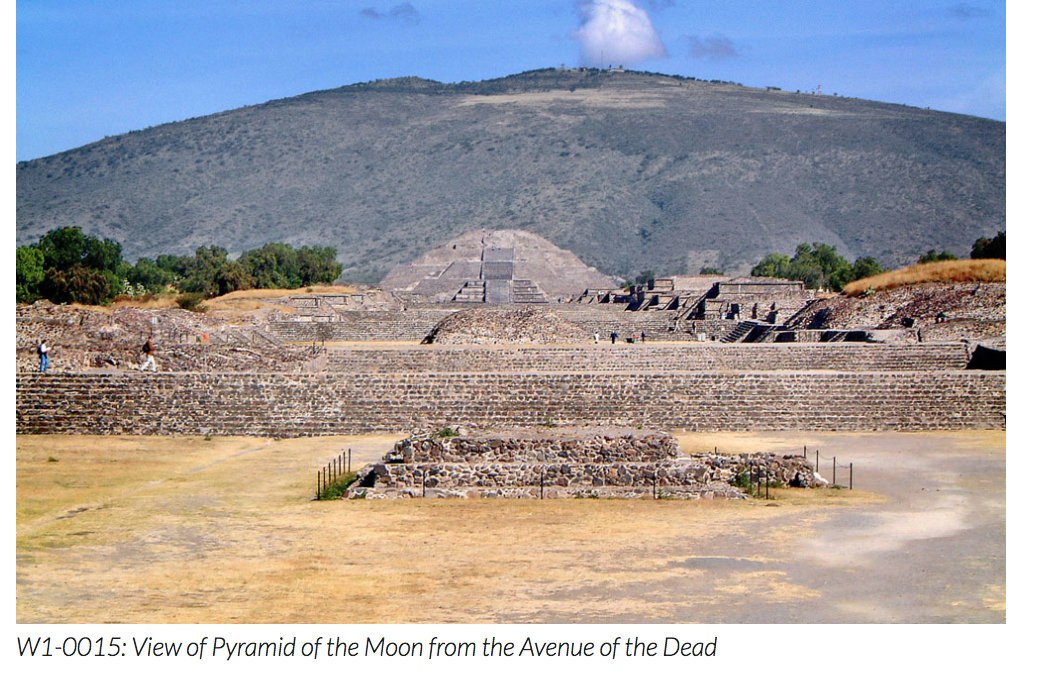
The caption above says it all.
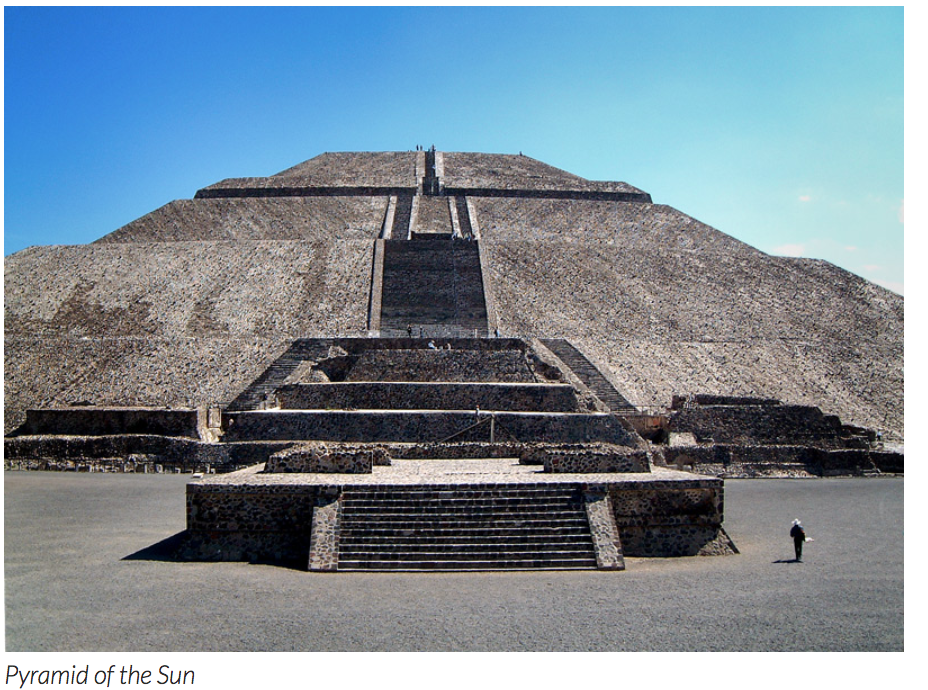
Teotihuacan was the locus point for multiple civilizations in Mesoamerica—for context, think of a city comparable to Rome in Europe in terms of cultural gravity of the region, even conducting trade with the Maya to the south. According to one source: “At its peak between 375 and 500 CE, the city [Teotihuacan] controlled a large area of the central highlands of Mexico and probably exacted tribute from conquered territories via the threat of military attack… Evidence of cultural contact in the form of Teotihuacan pottery and luxury goods is found in elite burials across Mexico and even as far south as the contemporary Maya centres of Tikal and Copan.” The Teotihuacano were a metropolitan civilization by our understanding of the word—home to many different languages and ethnic groups, bound together by shared bonds, trade and occasional wars with the Maya.
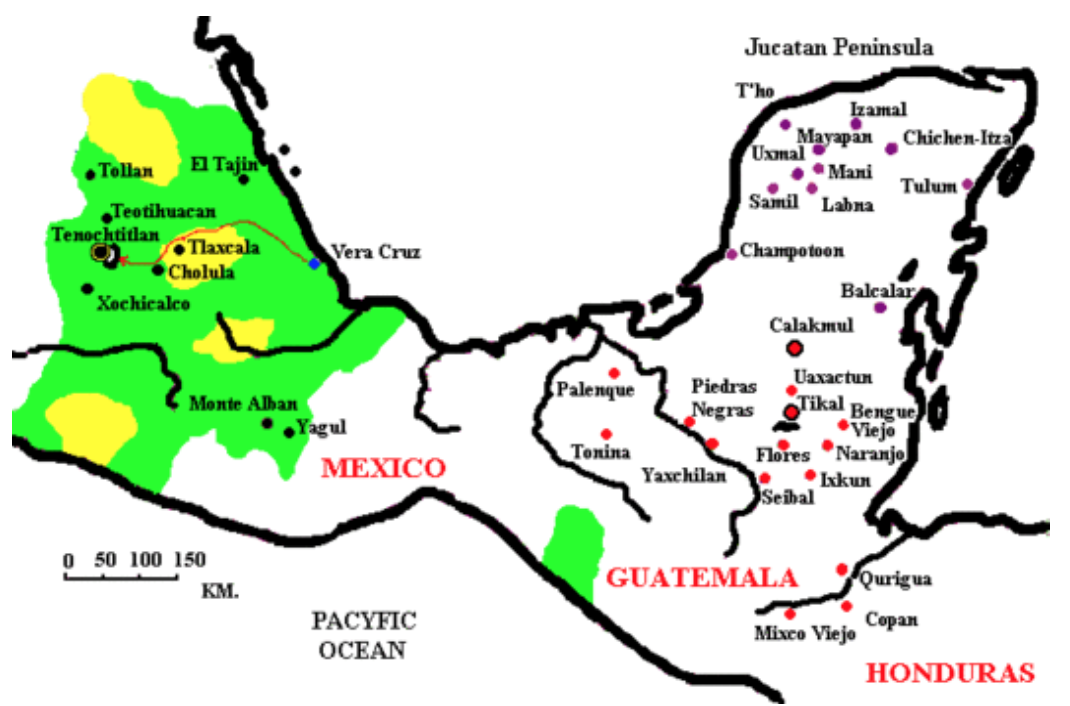
An excellent map of Classic-era Mesoamerica. Teotihuacan is on the left.
The Mexica borrowed several stylistic choices from the city (notably the old god, Tlaloc, previously discussed in other articles and some feathered serpent imagery), as well as making it part of their claim to legitimacy and cultural heritage—a larger topic, but suffice to say that the Mexica empire was relatively young at the time of the Conquest—under two hundred years and they needed all the cultural capital they could get to help keep their trade empire intact, consisting of numerous city states. Incorporating Teotihuacan imagery and architecture and mixing it with their nomadic Chichimec/Nahua heritage resulted in a unique blend of cultures.
The Gods Must Be Crazy...
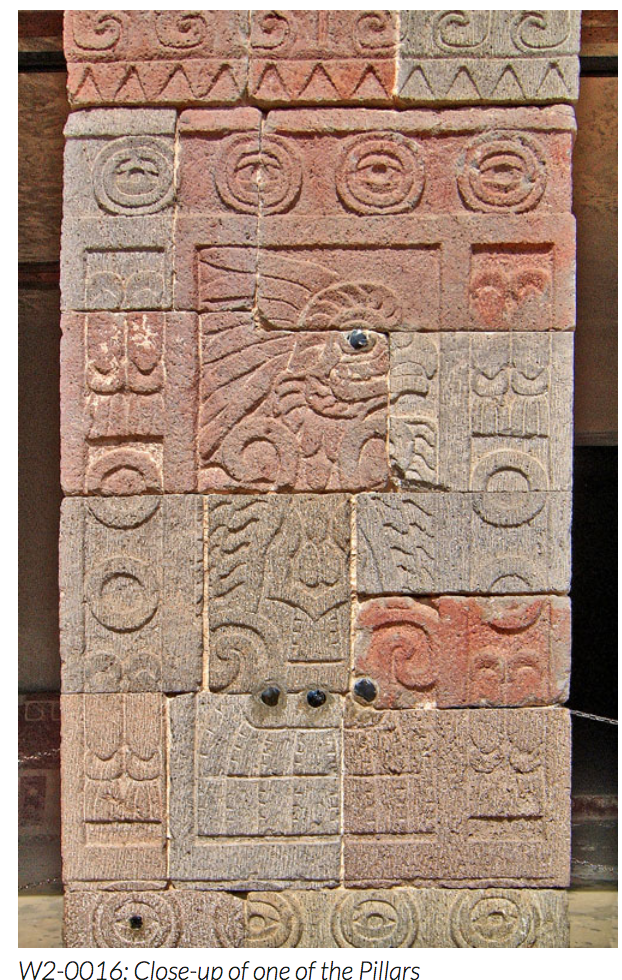
The Mexica esteemed Teotihuacan so much that as they assembled their mythology, they said the gods met at Teotihuacan to create the world. According to Karl Taube and Mary Miller of The Gods and Symbols of Ancient Mexico and the Maya: “In 1971 archaeologists found the opening to a cave under the Pyramid of the Sun at Teotihuacan. Archaeologists found that this cave extended far beneath the Pyramid of the Sun, with small ancillary chambers radiating from the central passageway. Ceramic evidence indicates that the cave was in use from Protoclassic [Date] until Aztec [Mexica] times, and it may well have been an ancient site of worship hallowed by the construction of the great pyramid above it. The Aztecs claimed to have come from a place called CHICOMOZTOC or Seven Caves: perhaps this sacred place lay under the ground at Teotihuacan. In any case, the Aztecs certainly considered the abandoned city sacred: they carried out rituals there, brought pieces of its sculpture and painting back to Tenochtitlan and made it the site of royal pilgrimage.” (162)
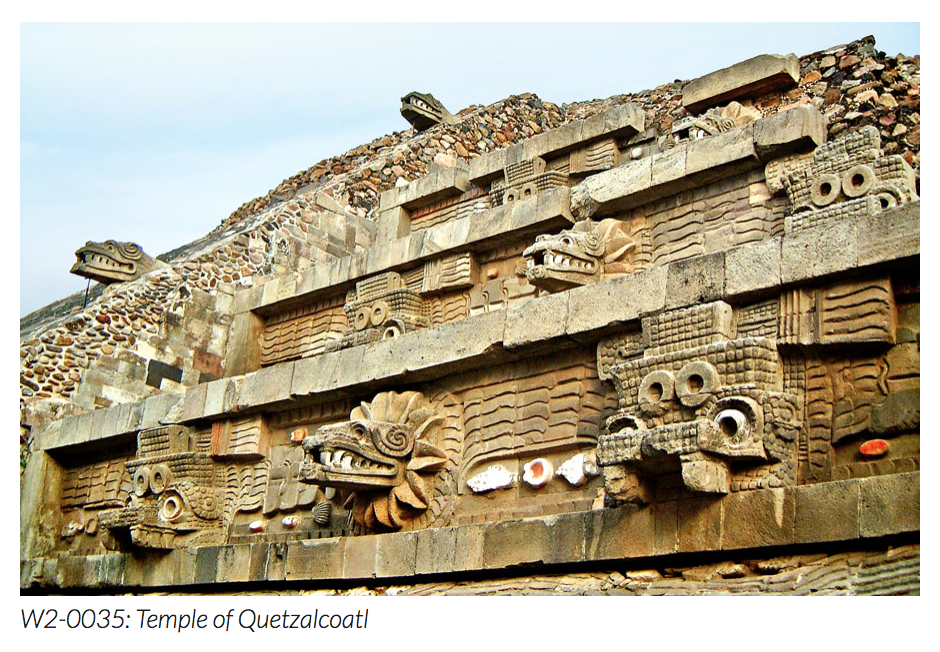
Feathered serpents, among other icons, were borrowed by the Mexica from Teotihuacan.
More than this set Teotihuacan apart—for one thing, there is hefty debate over the city's imagery and the presence of a "Great Goddess" featured in the murals and presumably prominently in the worship of the city. Taube believes that the Great Goddess was associated with spiders and may have been a conglomeration of several deities. However, academics like Paulinyi hold that this "Great Goddess" is more likely representation of the storm/rain god Tlaloc (one of the oldest deities in the agrarian portions of Mesoamerica for obvious reasons) which would be logical, while supporters of the hypothesis point to several unique aspects to the Great Goddess of Teotihuacan that serve to differentiate her from the Lord of Sustenance.
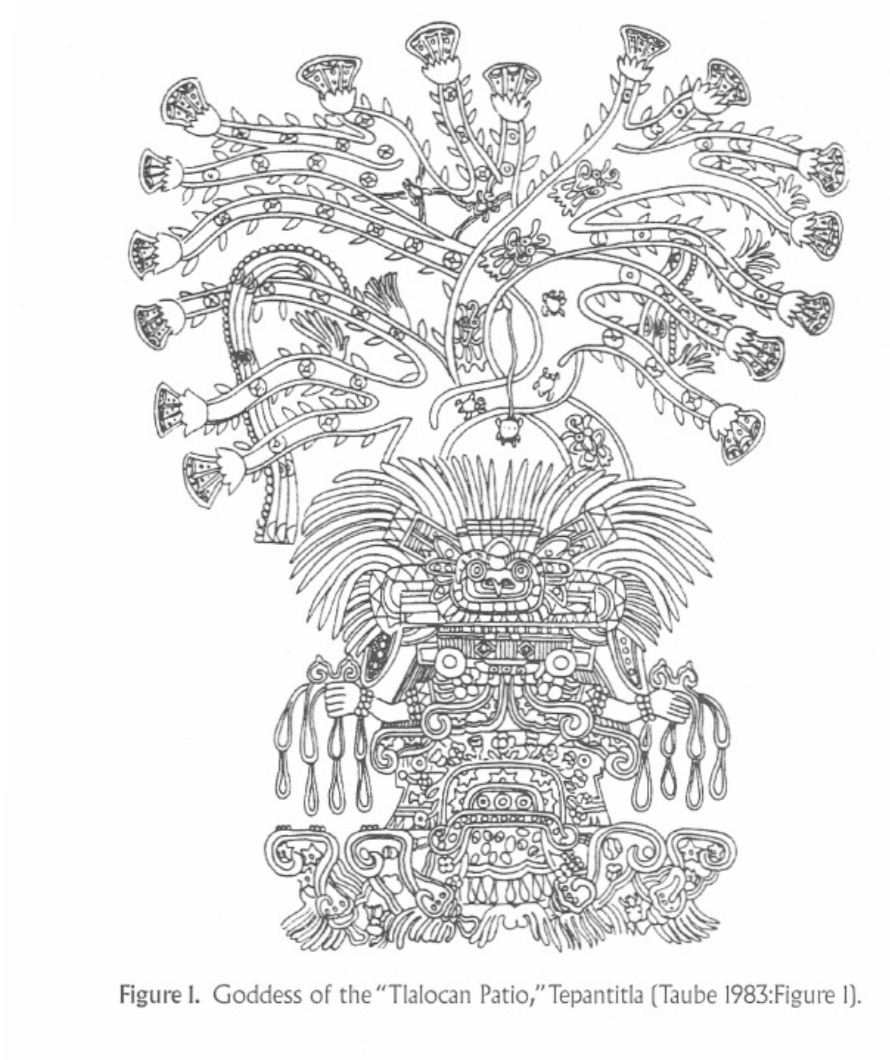
Note the headdress and the rounded eyes--also characteristics of Tlaloc.
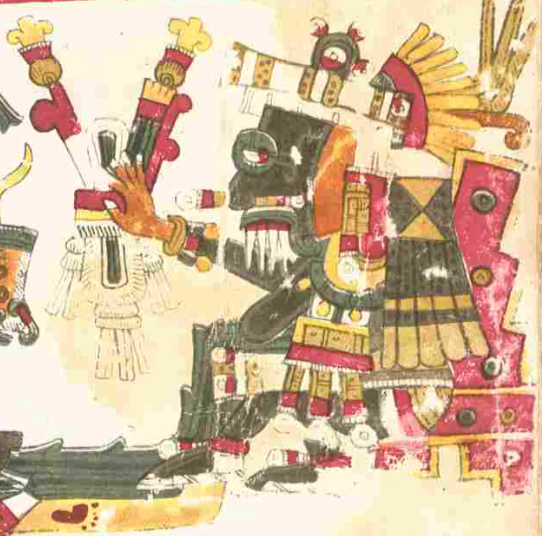
Tlaloc bringing rain. Note the 'goggled eyes' and protruding teeth below a prominent upper lip.
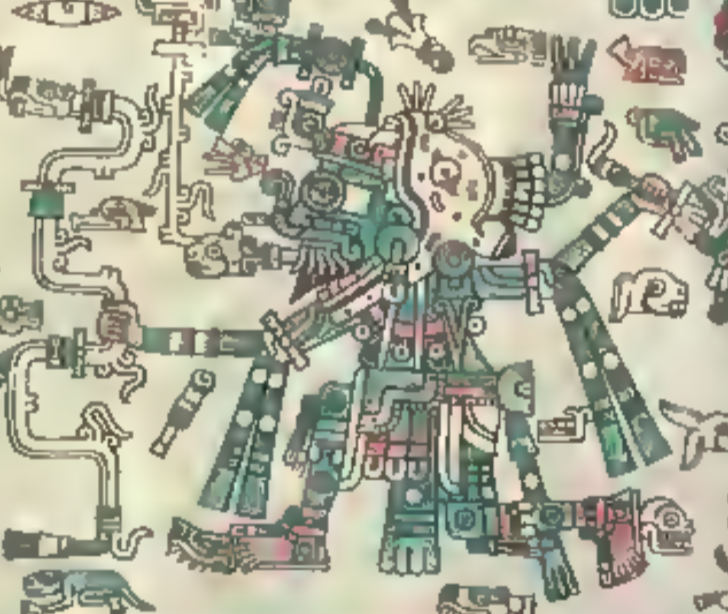
Two Parts Inspiration...
Regardless of who that figure that features so prominently in Teotihuacan was or is, there is no question that Orazca pays homage to that figure in it's artwork and in Magic: The Gathering. Behold! Evidence! Splashy, exciting evidence!
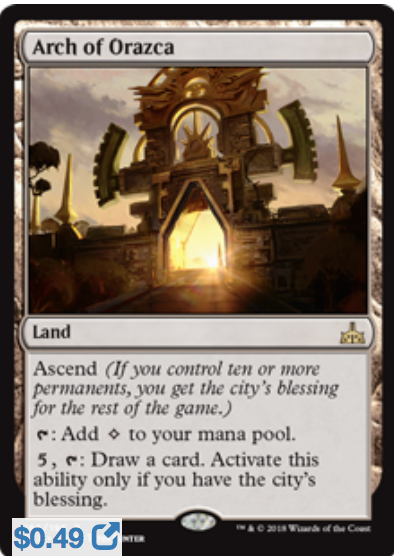
What about here, literally spitting an invader out of Orazca? It's even keeping with the previously discussed water-themes associated with both Tlaloc and The Great Goddess!
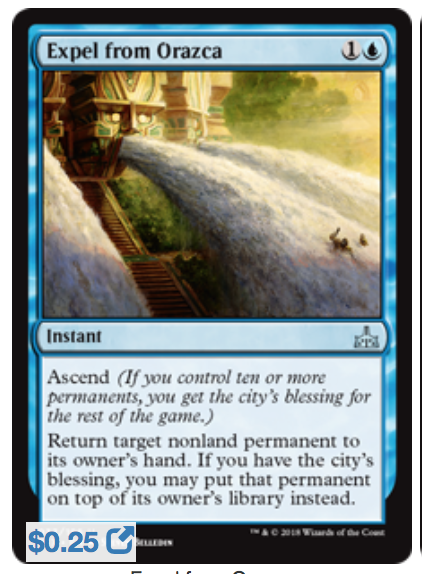
Teotihuacano mural work is known for being vividly colored and astonishingly well-preserved. Here is an example of such work:
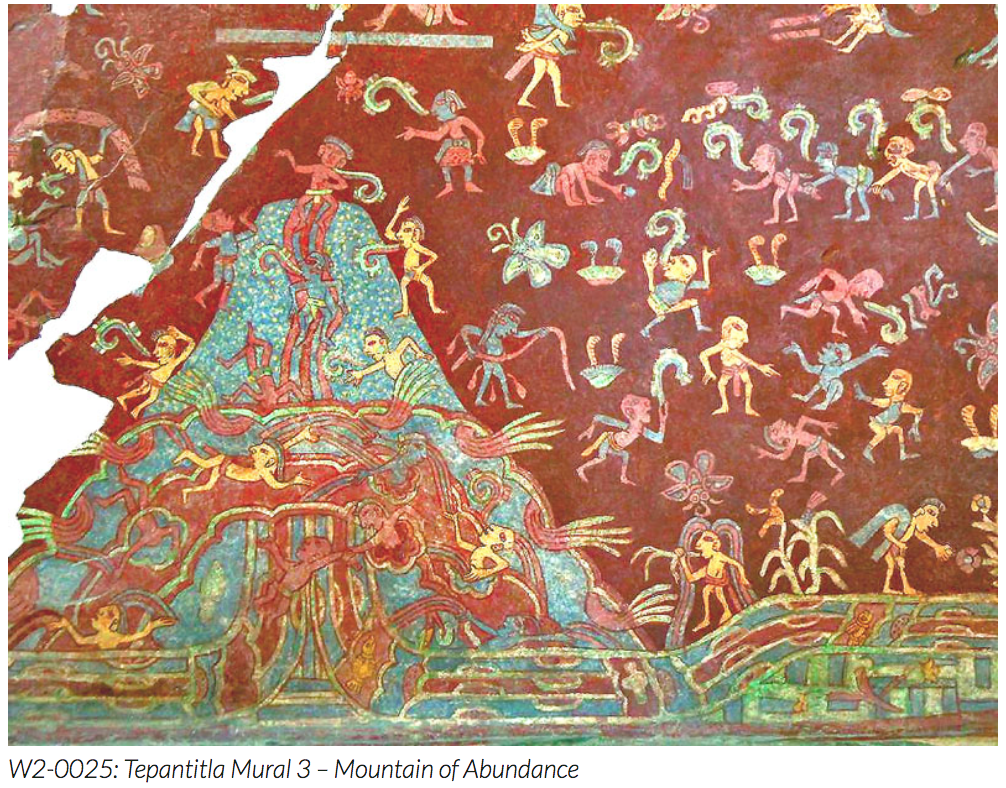
Mountains were also associated with Tlaloc in Nahua cosmology.
Bright Lights, Big City
Now that we have our historical feet under us—look closely at the city of Orazca we can see in the artwork of the cards—note the similarities in color choice, architecture and layout to Teotihuacan-the bright colors, focus on water and ornate stonework. See if you can spot some of the aesthetic similarities and inspirations between cards and archaeological treasure-troves like Teotihuacan.
Like Teotihuacan, Orazca is a legendary city of significance and interest (political, economic, spiritual, geographic) to regional powers that at the start of the Ixalan block was abandoned. This allows Orazca another point of comparison in Mesoamerican history—the Mayans, even prior to the conquest, had abandoned cities to the jungle, some of which remain so today. Teotihuacan is in the Mexican Highlands, but the Orazca is clearly in the tropics, complete with foliage decorating the temples.
The merfolk want to safeguard the city from invaders—with some notable exceptions.
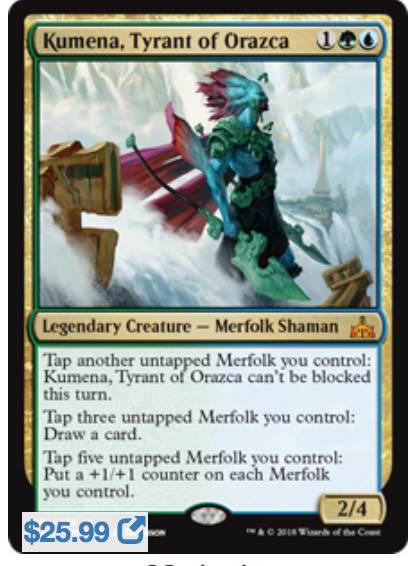
This guy, for one.
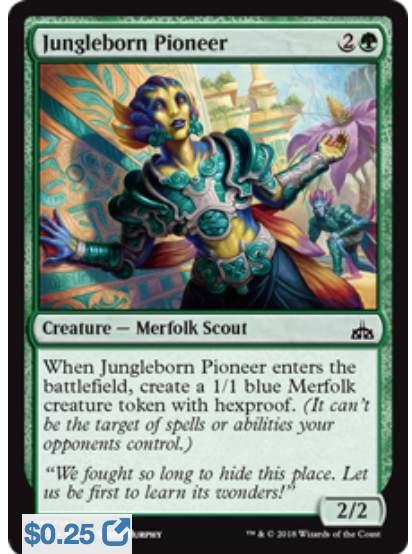
The pirates of Ixalan want to plunder Orazca—both because that is literally their job, and because an abandoned city must be positively infested with loot waiting to be carted away.
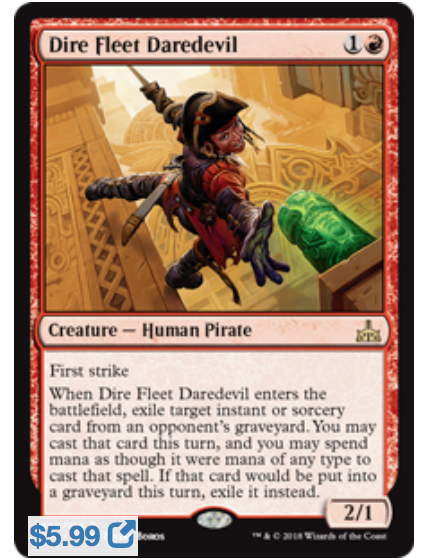
Look at the architecture behind the daring descent!
The Sun Empire, the stand-in for the Mexica in this scenario, honor the city but also want it because they know it holds world-shaking powers—and because the damnable River Heralds protect it so fiercely.
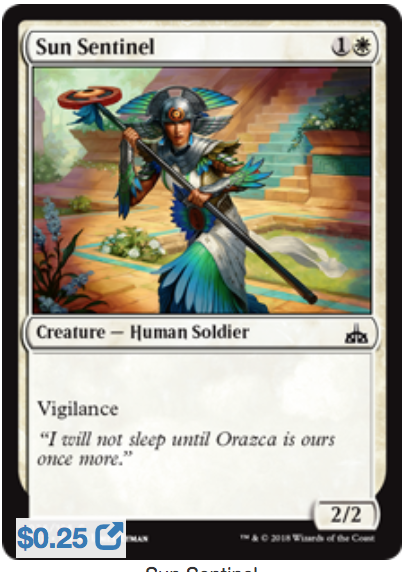
And lastly, the damnable Legion of Dusk—yep, those undead inquisitors and conquistadors want the Immortal Sun stored at the heart of Orazca to bring life eternal. Look at this guy, mugging outside Azor's Gateway.
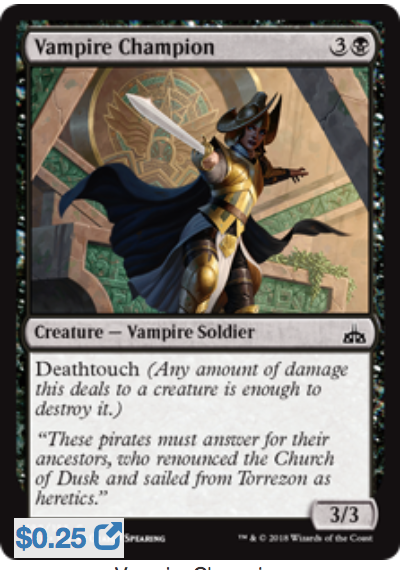
Look at the stonework behind the drawn sword and note the similarity to Teotihuacano architecture in the stonework.
Even powers outside of Ixalan reside here—cough, cough—Azor. Everyone’s favorite Lawful Irritating former planeswalker lives deep in the catacombs of Orazca and presumably being the sphinx equivalent of a hobo who spends his time making a really, really fancy doorway out of the equivalent of his teeth and spare pebbles.
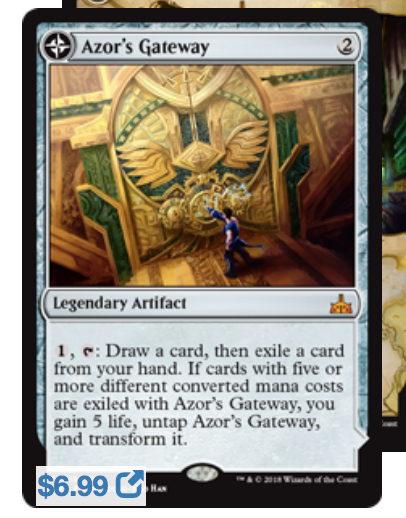
All these forces come to a head at Orazca. Pirates shank vampires who exsanguinate merfolk who thwart dinosaur-riders. The city of Orazca’s sun turns red:
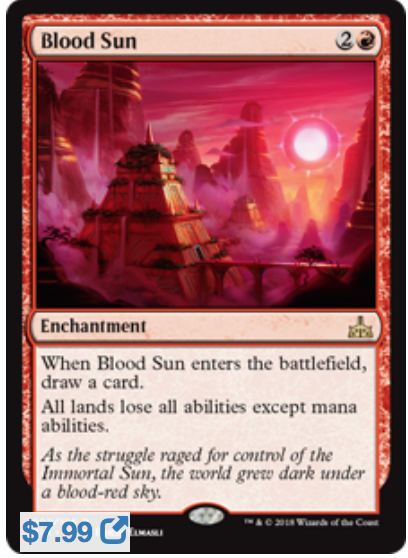
Fun fact, guys. Teotihuacan, when translated from Nahuatl, has been translated as ‘Birthplace of the Gods’. The similarity between the Latin root ‘theo’ and Nahuatl ‘Teo/Teotl’ was taken by the Spanish to be a sign of providence, when it was just a linguistic coincidence.
And all this was BEFORE the dinosaurs got involved.
Painting the Sun Red
It is of significance that the final confrontation in the Ixalan Block takes place at Orazca/Teotihuacan—the struggle takes apocalyptic overtones. And we can help understand these overtones by briefly reviewing the Legend of the Five Suns, next time. The Mexica conception of time was cyclical—creation, destruction, recreation and so forth. There were four earths before us, living in the fifth—the previous ones were caused by a series of…disagreements between the gods fighting over primacy, or the ‘sun’ of the world—we will definitely discuss The Immortal Sun and the Mexica Calendar stone in a later article but for now, ponder this.
Five suns, five elder dinosaurs.
We’ll explore this next time though, so ta for now!
Sources
"The 'Great Goddess' of Teotihuacan: Fiction or Reality?" by Zoltan Paulinyi (Courtesy of Academia.edu)
https://www.ancient.eu/Teotihuacan/
*https://kyle-history.wikispaces.com/Seung+Wan+and+Chan+Woo%27%27s+Maya+Project*
https://uncoveredhistory.com/mexico/teotihuacan/teotihuacan-temple-of-the-feathered-serpent/
- The Gods and Symbols of Ancient Mexico and the Maya
by Karl Taube and Mary Miller
https://www.smithsonianmag.com/history/discovery-secret-tunnel-mexico-solve-mysteries-teotihuacan-180959070/
http://maliarts.net/MA/teotihuacan.html
Charles Allison
I'm from just north of hell, I was schooled in a blossoming backwater, and currently am the worst living bureaucrat since Franz Kafka breathed his last, tremulous breath. I’ve been playing Magic: The Gathering since middle school, and Commander in particular since college, putting about a decade of experience brewing, scheming and fuming over historical travesties under my belt. I get dizzy walking in straight lines. I recently received my MFA from Arcadia University's creative writing program. My work has previously appeared in Podcastle, Stonecoast Review, Devilfish Review and Bride of Chaos.
Your opinions are welcome. We love hearing what you think about Magic! We ask that you are always respectful when commenting. Please keep in mind how your comments could be interpreted by others. Personal attacks on our writers or other commenters will not be tolerated. Your comments may be removed if your language could be interpreted as aggressive or disrespectful. You may also be banned from writing further comments.
